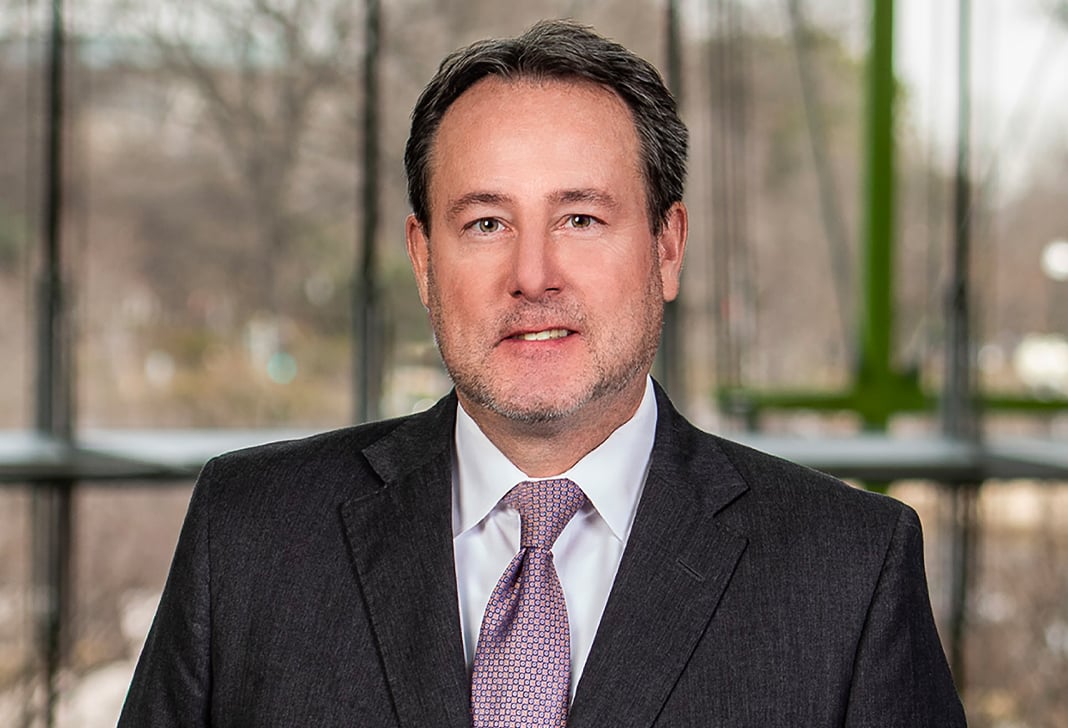
Southern District of New York Bankruptcy Court Rules That Avoidance Powers Apply Extraterritorially
Over the past 21 years, two U.S. district court judges in the Southern District of New York have held that the avoidance powers conferred on a bankruptcy trustee or chapter 11 debtor-in-possession under the Bankruptcy Code do not apply to pre-bankruptcy transfers made by a debtor outside the United States. However, a U.S. bankruptcy court judge in the same district recently reached the opposite conclusion in Weisfelner v. Blavatnik (In re Lyondell), 543 B.R. 127 (Bankr. S.D.N.Y. 2016). In Lyondell, bankruptcy judge Robert E. Gerber refused to dismiss a claim seeking avoidance of a fraudulent transfer under section 548 of the Bankruptcy Code on the ground that the challenged transfer occurred outside the U.S. According to Judge Gerber, Congress could not have intended to exclude extraterritorial transfers from avoidance under section 548 while explicitly defining property of the bankruptcy estate under section 541 of the Bankruptcy Code to include all of the debtor’s property “wherever located and by whomever held.”
The Presumption Against Extraterritoriality
“It is a longstanding principle of American law ‘that legislation of Congress, unless a contrary intent appears, is meant to apply only within the territorial jurisdiction of the United States.’ ” EEOC v. Arabian American Oil Co., 499 U.S. 244, 248 (1991) (quoting Foley Bros. v. Filardo, 336 U.S. 281, 285 (1949)). This “presumption against extraterritoriality” is a judicially developed rule of statutory construction whereby federal law is presumed not to apply to conduct or property outside the United States “unless a contrary intent appears.” Morrison v. National Australia Bank Ltd., 561 U.S. 247, 255 (2010). In Smith v. United States, 507 U.S. 197, 204 n.5 (1993), the U.S. Supreme Court explained that this presumption is at least partially “the commonsense notion that Congress generally legislates with domestic concerns in mind.” The presumption also “serves to protect against unintended clashes between our laws and those of other nations which could result in international discord.” Arabian American, 499 U.S. at 248 (citing McCulloch v. Sociedad Nacional de Marineros de Honduras, 372 U.S. 10, 20–22 (1963))
Contrary intent is shown through “clear evidence,” either in the statutory text or the “legislative purpose underlying it.” Id. at 204. However, a law need not explicitly state that “this law applies abroad” to have extraterritorial effect, and context is relevant to infer the statute’s meaning. Morrison, 561 U.S. at 255.
Courts generally perform a two-step inquiry in determining whether to apply the presumption against extraterritoriality. First, the court must determine whether the presumption applies by “identifying the conduct proscribed or regulated by the particular legislation in question” and by considering whether that conduct “occurred outside of the borders of the U.S.” See Societe Generale plc v. Maxwell Commc’n Corp. plc (In re Maxwell Commc’n Corp. plc), 186 B.R. 807, 816 (S.D.N.Y. 1995), aff’d on other grounds, 93 F.3d 1036 (2d Cir. 1996). Second, if the presumption is implicated, the court must examine lawmakers’ intent to determine whether Congress “intended to extend the coverage of the relevant statute to such extraterritorial conduct.” Id.
Most courts have adopted a flexible approach in determining whether a transaction is extraterritorial. Many apply a “center of gravity” test, whereby the court examines the facts of the case to ascertain whether they have a center of gravity outside the U.S. See, e.g., French v. Liebmann (In re French), 440 F.3d 145, 149 (4th Cir. 2006), cert. denied, 549 U.S. 815 (2006); In re Florsheim Group Inc., 336 B.R. 126, 130 (Bankr. N.D. Ill. 2005). This analysis may involve consideration of “all component events of the transfer[],” Maxwell, 186 B.R. at 816, such as “whether the participants, acts, targets, and effects involved in the transaction at issue are primarily foreign or primarily domestic.” French, 440 F.3d at 150.
Extraterritorial Operation of U.S. Bankruptcy Laws?
In certain respects, U.S. bankruptcy law has explicitly applied extraterritorially for more than 60 years. In 1952, due to confusion about the scope of a debtor’s property to be administered by a bankruptcy trustee under the Bankruptcy Act of 1898, Congress inserted the phrase “wherever located” into section 70a of the Act “to make clear that a trustee in bankruptcy is vested with the title of the bankrupt in property which is located without, as well as within, the United States.” H.R. Rep. No. 82-2320, at 15 (1952), reprinted in 1952 U.S.C.C.A.N. 1960, 1976; see also Pub. L. No. 82-456, 66 Stat. 420 (July 7, 1952). This language was preserved in section 541(a) of the Bankruptcy Code (enacted in 1978), which provides that the bankruptcy estate includes the debtor’s property “wherever located and by whomever held.” Similarly, 28 U.S.C. § 1334(e) gives federal district courts—and, by jurisdictional grant pursuant to 28 U.S.C. § 157(a), bankruptcy courts within each district—exclusive jurisdiction of all property of the debtor and its estate, “wherever located.”
Many courts have concluded that, because the automatic stay in section 362(a) of the Bankruptcy Code expressly prohibits, among other things, acts to obtain possession of “property of the estate,” the stay bars creditor collection efforts with respect to estate property located both within and outside the U.S. See, e.g., Milbank v. Philips Lighting Elecs. N. Am. (In re Elcoteq, Inc.), 521 B.R. 189 (Bankr. N.D. Tex. 2014); In re Nakash, 190 B.R. 763 (Bankr. S.D.N.Y. 1996).
However, the provisions of the Bankruptcy Code permitting avoidance of preferential or fraudulent transfers of property and allowing recovery of the property—e.g., sections 547, 548, and 550—do not expressly refer to “property of the estate.” Furthermore, some courts, noting that section 541(a)(3) of the Bankruptcy Code provides that any “interest in property that the trustee recovers under section . . . 550” is part of the estate, have concluded that fraudulently transferred property is not estate property unless and until it is recovered by the trustee. See, e.g., FDIC v. Hirsch (In re Colonial Realty Co.), 980 F.2d 125 (2d Cir. 1992); accord Rajala v. Gardner, 709 F.3d 1031 (10th Cir. 2013). But see Am. Nat’l Bank of Austin v. MortgageAmerica Corp. (In re MortgageAmerica Corp.), 714 F.2d 1266, 1277 (5th Cir. 1983) (“[p]roperty fraudulently conveyed and recoverable under the Texas Fraudulent Transfers Act remains, despite the purported transfer, property of the estate within the meaning of section 541(a)(1)”).
Two U.S. district court judges in the Southern District of New York have cited Colonial Realty as support for their holdings that the Bankruptcy Code’s avoidance and recovery provisions do not apply extraterritorially. In In re Maxwell Commc’n Corp. plc, 186 B.R. 807 (S.D.N.Y. 1995), district judge Shira A. Scheindlin ruled that Congress did not clearly express its intention, in statutory language or elsewhere, for section 547 of the Bankruptcy Code to empower a trustee to avoid foreign preferential transfers.
In S.I.P.C. v. Bernard L. Madoff Inv. Sec. LLC, 513 B.R. 222 (S.D.N.Y. 2014), district judge Jed S. Rakoff addressed the extraterritorial effect of section 550, which authorizes the trustee to recover property (or its value) after a transfer of the property has been avoided. In ruling that section 550 does not apply extraterritorially, Judge Rakoff wrote:
Under the logic of Colonial Realty, whether “property of the estate” includes property “wherever located” is irrelevant to the instant inquiry: fraudulently transferred property becomes property of the estate only after it has been recovered by the Trustee, so section 541 cannot supply any extraterritorial authority that the avoidance and recovery provisions lack on their own.
513 B.R. at 230; accord Barclay v. Swiss Fin. Corp. Ltd. (In re Bankr. Estate of Midland Euro Exch. Inc.), 347 B.R. 708 (Bankr. C.D. Cal. 2006). Under the reasoning of the courts in Maxwell and Madoff, the language of section 541(a)(3) makes clear that Congress could not have intended the trustee’s avoidance powers to apply extraterritorially, even though section 541 also clearly shows that lawmakers intended property of the estate to be defined broadly.
The bankruptcy court in Lyondell ruled to the contrary.
Lyondell
Lyondell Chemical Company (“LCC”) was the target of a failed leveraged buyout (“LBO”) in December 2007. The purchaser was Basell AF S.C.A. (“Basell”), a Luxembourg company. In connection with the LBO, LCC incurred $21 billion in secured debt. Of the loan proceeds, $12.5 billion was distributed to LCC’s stockholders and nearly $1 billion was paid in fees, expenses, and other transaction costs. Basell made distributions to its own stockholders—including BI S.à.r.l., another Luxembourg company, which owned 99.99 percent of Basell’s capital stock—prior to the transaction. The payments included a €100 million distribution two weeks before the LBO closed.
LCC filed for chapter 11 protection in the Southern District of New York in January 2009. Five adversary proceedings were filed in connection with the chapter 11 cases against LCC’s old shareholders, Basell, Basell’s principals, BI S.à.r.l., LCC’s officers and directors, and certain other defendants challenging the LBO transactions under a variety of legal theories, including breach of fiduciary duty; intentional and constructive fraudulent transfer; unlawful dividend; and a host of additional bases for recovery under state law, the Bankruptcy Code, and the laws of Luxembourg.
Certain of the claims were premised on the €100 million distribution Basell made to its shareholders in December 2007, two weeks prior to the LBO transaction. The trustee of a litigation trust created pursuant to LCC’s chapter 11 plan alleged, among other things, that the distribution was avoidable as a fraudulent transfer under section 548 of the Bankruptcy Code, and he sought recovery of the €100 million transfer under section 550. The defendants moved to dismiss, arguing, among other things, that sections 548 and 550 do not apply extraterritorially.
The Bankruptcy Court’s Ruling
Bankruptcy judge Gerber first examined whether the conduct at issue was sufficiently foreign to require the application of the presumption against extraterritoriality. He concluded that, for purposes of the motion to dismiss, the complaint adequately alleged that the center of gravity of the distribution was outside the U.S. because, among other things, it alleged that the transfer occurred between two Luxembourg companies.
Next, Judge Gerber searched for clear evidence that Congress intended section 548 of the Bankruptcy Code to apply outside the U.S. No court, he explained, has found such clear evidence in the text of section 548 itself. Even so, he noted, the presumption against extraterritoriality does not require such an explicit stamp on each statutory provision. Instead, the presumption can be rebutted by unequivocal evidence from the context of the statute that Congress intended for it to apply extraterritorially.
For guidance on this issue, Judge Gerber looked to the Fourth Circuit’s ruling in French, where the court held that Congress expressed an intent for section 548 to apply extraterritorially by adopting parallel language in sections 548 and 541(a):
Section 541 defines “property of the estate” as, inter alia, all “interests of the debtor in property.”. . . In turn, [section] 548 allows the avoidance of certain transfers of such “interest[s] of the debtor in property.”. . . By incorporating the language of [section] 541 to define what property a trustee may recover under his avoidance powers, [section] 548 plainly allows a trustee to avoid any transfer of property that would have been “property of the estate” prior to the transfer in question as defined by [section] 541 even if that property is not “property of the estate” now.
French, 440 F.3d at 152. Thus, contrary to Maxwell and Madoff, the Fourth Circuit concluded that it makes no difference whether unrecovered property which has been fraudulently transferred is property of the estate.
Persuaded by the reasoning in French, Judge Gerber distinguished the case before him from Colonial Realty. In Colonial Realty, he explained, the Second Circuit recognized that sections 541(a)(1) and (a)(3) “were speaking as of different times.” Specifically, section 541(a)(1) “speaks of property of the estate ‘as of the commencement of the case’; whereas section 541(a)(3) speaks of property that enters the estate at a later time, when it is recovered under section 550.” The judge wrote, “That plainly correct observation by the Second Circuit falls far short of holding that property not in the estate as of the commencement of the case cannot be brought into the estate because it is in a foreign locale.”
On the basis of these and other similar authorities (see Lawrence Westerbrook, Avoidance of Pre-Bankruptcy Transactions in Multinational Bankruptcy Cases, 42 Texas Int’l L.J. 899 (Summer 2007)), Judge Gerber held that Congress could not have intended for property anywhere in the world to enter the bankruptcy estate once recovered pursuant to the avoidance powers while simultaneously not intending for such powers to reach anywhere in the world. This conclusion, he wrote, rests on the necessity “to protect the in rem jurisdiction of the bankruptcy courts over assets that Congress has declared become property of the estate when recovered under section 541(a)(3).
Outlook
Although Judge Gerber did not address the issue, he apparently did not see himself as bound by the rulings in Maxwell and Madoff. This is consistent with the majority approach that bankruptcy courts are not bound by decisions of a single district court judge (or even two district court judges) in a multijudge district. Thus, Lyondell stakes out new territory in the Southern District of New York on the extraterritorial reach of the Bankruptcy Code’s avoidance powers.
The ruling is a positive development for parties challenging extraterritorial transfers of a U.S. debtor’s assets. However, its practical limitations were evident even in Lyondell, where the court also held that the complaint failed to establish that the court could exercise personal jurisdiction over certain of the foreign defendant-transferees. Even if the Bankruptcy Code’s avoidance powers apply extraterritorially on their face, lack of personal jurisdiction over a transferee would significantly complicate efforts to enforce them.
Judge Gerber is not the only bankruptcy judge in the Southern District of New York to consider cross-border issues recently in connection with avoidance actions. For example, in Hosking v. TPG Capital Mgmt., L.P. (In re Hellas Telecomms. (Luxembourg) II SCA), 535 B.R. 543 (Bankr. S.D.N.Y. 2015), bankruptcy judge Martin Glenn ruled that, in a chapter 15 case, even though U.K. law governed actual fraudulent transfer claims asserted by the liquidators of a foreign debtor, a U.S. bankruptcy court has jurisdiction to adjudicate the claims applying U.K. law.
Jones Day publications should not be construed as legal advice on any specific facts or circumstances. The contents are intended for general information purposes only and may not be quoted or referred to in any other publication or proceeding without the prior written consent of the Firm, to be given or withheld at our discretion. To request reprint permission for any of our publications, please use our "Contact Us" form, which can be found on our website at www.jonesday.com. The mailing of this publication is not intended to create, and receipt of it does not constitute, an attorney-client relationship. The views set forth herein are the personal views of the authors and do not necessarily reflect those of the Firm.



